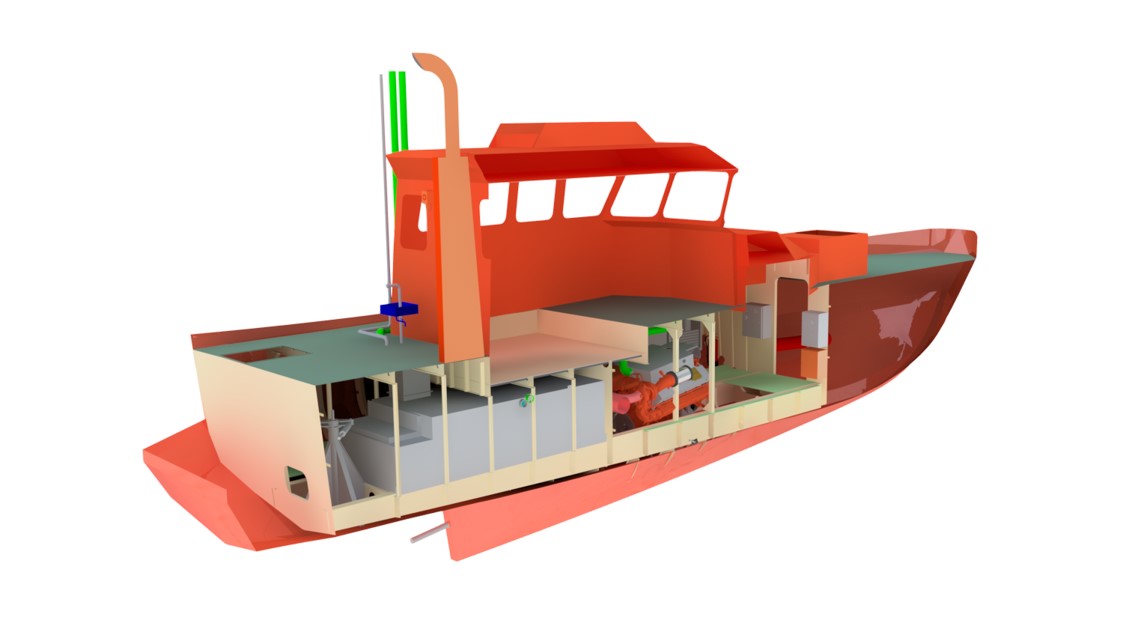
What are the key differences in designing a pilot boat for a conversion to Methanol?
First, compared to all similarities between a conventional boat and methanol fuelled boat, the differences are very few.
A significant difference is that the fuel storage capacity needs about double to volume to have the same operating range. This is due to the lower energy density of methanol. Methanol still has higher energy density than most other alternative fuels. Another issue is that methanol has a lower flash point compared to conventional fuels. This requires a number of safety measures such as double walled piping, modification to fire suppression systems and a gas detection system Of course the engine need to be adopted for methanol but with a compression ignited marine methanol engine the operator will not experience any difference in driveability and handling.
What needs to be considered in terms of safety of health protection in the design of a Methanol propelled pilot boat?
During normal operation, the crew will not be in contact with methanol. The concept of double enclosure will ensure that methanol will be kept away from the crew. During bunkering and maintenance, personal protective equipment should be worn. This includes eye protection and rubber gloves.
Eye wash stations shall be easily available onboard.
What are the main challenges in the technical design and how do you cope with it?
The main challenge is to arrange to fuel storage in a good way since double the volume is needed to keep the same operating range as for conventional fuel. Sometimes the fuel volume issue can be solved by implementing better bunkering procedures to allow more frequent bunkering.
What is the impact on the investment costs for converting a pilot boat and what is the expect impact on lifecycle costs?
For a new building of a methanol fuelled boat, the additional cost should be less than 5%. For a conversion, the cost is completely depended on the actual case. The life cycle cost related to maintenance should not differ. The cost of fuel makes a big impact on the life cycle cost. The difference will not be dependant if it is alcohol fuel or oil-based fuel but rather if it fossil or renewable.



